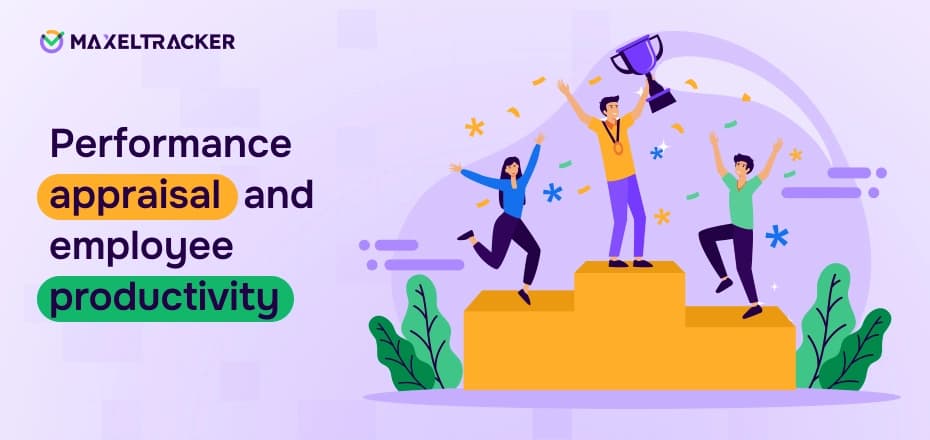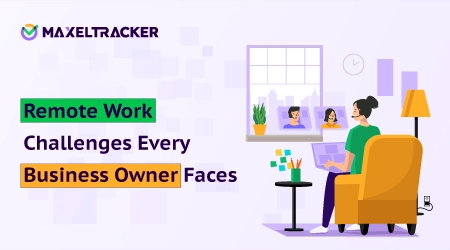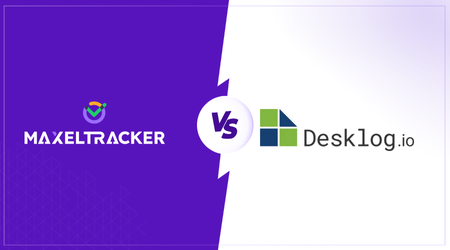

Workplace efficiency is a major concern for businesses, with studies showing that only 21% of employees worldwide feel engaged at work, while unproductive work habits cost businesses an estimated $1.8 trillion annually. As management expert Peter Drucker once said, “Efficiency is doing things right; effectiveness is doing the right things.”Organizations striving for success must focus on two critical aspects: employee performance and employee productivity. While these terms are often used interchangeably, they have distinct meanings and implications. Understanding these differences can help businesses refine their strategies, improve processes, enhance employee satisfaction, and drive overall success.
Employee performance reflects the quality and impact of an individual’s work, measured against established standards and goals. It goes beyond simply completing tasks to include the efficiency, accuracy, and overall effectiveness of the work delivered. A high-performing employee consistently meets or exceeds expectations, showcasing commitment, skill, and professionalism in their role.
Key components of employee performance include:
Skill and Competency: An employee’s ability to effectively perform tasks, drawing on their skills, experience, and problem-solving abilities to deliver results.
Work Quality: The ability to complete tasks with high accuracy and attention to detail. Consistently producing work that meets or exceeds company standards contributes to overall business success.
Meeting Deadlines: The ability to manage time effectively and deliver work within the specified deadlines. Balancing speed and quality ensures tasks are completed efficiently without compromising results.
Adherence to Company Policies: Following company procedures, ethical guidelines, and compliance standards to ensure a consistent, reliable, and professional approach in all aspects of the job.
Performance is typically assessed through performance reviews, manager evaluations, and key performance indicators (KPIs). It focuses on how well an employee fulfills their job responsibilities, collaborates with teams, and contributes to the company’s broader objectives. Regular feedback, goal-setting, and coaching can help improve employee performance over time.
Employee productivity, on the other hand, is a measure of efficiency—how much work an employee completes within a given period. Productivity is about output: the amount of work accomplished in relation to time, effort, and resources used. While performance is about quality, productivity is about quantity and efficiency.
Several factors influence productivity, including:
Time management – Efficiently organizing and prioritizing tasks to maximize output within a limited time frame.
Work output – The number of tasks or projects completed within a set period, reflecting how much an employee contributes to operational goals.
Use of resources – The ability to utilize available tools, technology, and support effectively to optimize efficiency.
Automation and technology use – Using digital tools, AI-driven systems, and automated workflows to streamline repetitive tasks and improve output.
Unlike performance, which is largely qualitative, productivity is measured through time-tracking software, work logs, and operational metrics. By analyzing these factors, businesses can identify bottlenecks, optimize workflows, and implement solutions to enhance productivity.
While employee performance and employee productivity are related concepts, they have distinct differences in their focus and measurement. Understanding these differences helps businesses assess and improve both the quality and quantity of work, leading to greater overall success.
Employee Performance: Performance is about how well an employee executes their work. It includes not only the completion of tasks but also the quality, accuracy, and impact of the work delivered. It’s about doing the right things effectively.
Employee Productivity: Productivity is focused on how much work an employee accomplishes in a given period. It measures the quantity of output relative to time, effort, and resources used. It's about doing things efficiently and maximizing output.
Employee Performance: Performance is often assessed based on quality metrics like task accuracy, skill level, meeting goals, and the ability to solve problems effectively. Key performance indicators (KPIs) and performance reviews are commonly used to measure this.
Employee Productivity: Productivity is typically measured in terms of output—the number of tasks completed, the time spent on each task, or how efficiently resources are used. Tools like idle time tracking, work logs, and operational metrics are often used to track employee productivity.
Employee Performance: Key factors include competency, work quality, meeting deadlines, and adherence to company policies. It focuses on the effectiveness of an employee's work and their ability to add value to the organization.
Employee Productivity: Key factors influencing productivity include time management, work output, and the use of resources. It emphasizes how efficiently an employee completes tasks and contributes to achieving operational goals.
Employee Performance: High performance drives innovation, customer satisfaction, and the overall success of a company. It helps build strong teams, enhances business growth, and improves company culture.
Employee Productivity: High productivity ensures that resources are utilized effectively and work is completed within the allocated time frame. It contributes to cost efficiency, meeting deadlines, and ensuring that operational targets are met.
Employee Performance: Focuses on long-term goals like improving skills, achieving professional development, and contributing to the company’s strategic objectives. Performance is about achieving results that align with both personal and organizational growth.
Employee Productivity: Focuses on short-term goals like completing tasks on time, minimizing downtime, and maximizing output. It’s about getting the job done in the most efficient manner possible.
Employee Performance: Qualitative in nature. It’s about the quality and effectiveness of the work performed rather than just how much work is done.
Employee Productivity: Quantitative in nature. It focuses on the amount of work completed and how efficiently tasks are carried out.
Employee Performance: Improving performance often requires feedback, coaching, and training. It focuses on skill development, competency growth, and enhancing work quality over time. Managers usually provide guidance to help employees refine their skills, solve problems better, and improve decision-making.
Employee Productivity: Productivity improvements are often driven by process optimization, time management training, and the adoption of technology to automate tasks. It may involve removing bottlenecks, introducing tools that streamline workflows, or optimizing work habits to maximize output.
Employee Performance: Performance metrics are often subjective and context-specific, assessing how well an employee meets specific quality standards and their contribution to team goals. These can include factors like creativity, problem-solving abilities, and leadership potential.
Employee Productivity: Productivity metrics are objective and data-driven, such as the number of tasks completed, hours worked, or output generated. These metrics are typically easier to measure and track, offering clear insights into the amount of work being done.
Employee Performance: The impact of performance is typically seen in the long term, as consistently high performance leads to career growth, company loyalty, and higher-quality work. It contributes to a culture of excellence that can elevate the entire team.
Employee Productivity: The impact of productivity is generally more immediate, affecting day-to-day operations. A productivity boost can help a company meet tight deadlines, fulfill customer orders, and achieve quarterly goals, contributing to the short-term success of the organization.
Employee Performance: Employees who perform well often feel engaged and motivated, as they take pride in their work and see the value of their contributions. Performance recognition through awards, promotions, and employee appreciation can greatly enhance job satisfaction and loyalty.
Employee Productivity: While productivity can be enhanced through incentives and recognition, engagement may not always be directly tied to productivity levels. A highly productive employee might still feel disengaged if they feel their work lacks purpose or is overly repetitive.
Employee Performance: Leaders focus on coaching and mentoring employees to help them develop professionally, improve interpersonal skills, and align with the organization’s values. Performance discussions often revolve around the employee's personal growth and career development.
Employee Productivity: Leaders working to enhance productivity focus on setting clear expectations, monitoring output, and removing obstacles that hinder performance. They might encourage employees to adopt best practices and work smarter, aiming to optimize workflows and increase efficiency.
Employee Performance: Employees who consistently perform well are often involved in strategic decision-making or are given opportunities for leadership roles, as their ability to analyze problems, provide solutions, and execute tasks at a high level is valued.
Employee Productivity: Productivity metrics typically inform operational decisions, like resource allocation, scheduling, or workflow design. Teams or managers will use productivity data to decide how to adjust workloads or introduce new systems that improve output.
Employee Performance: High performance is a cornerstone of a high-performance culture, where employees are expected to excel, collaborate, and contribute to the company’s success. This culture fosters accountability, quality standards, and a sense of pride in work.
Employee Productivity: Productivity can influence a culture of efficiency, where employees are encouraged to meet deadlines, minimize downtime, and maintain a fast pace. However, if not managed carefully, a focus on productivity alone might lead to burnout or a lack of focus on quality.
Employee Performance: Performance is often evaluated on an individual level, recognizing personal achievements and the contributions each employee makes to their team or the organization.
Employee Productivity: Productivity is often considered at both the individual and team levels, as teams may work together to produce outputs, and collective productivity impacts the organization’s overall success. High team productivity often results from effective collaboration, task allocation, and synergy.
Employee Performance: Disparities in performance can lead to internal conflicts, as employees might feel judged based on subjective evaluations. This could result in tension between workers, especially if performance reviews are perceived as unfair or inconsistent.
Employee Productivity: Productivity issues may lead to frustration if employees feel that unrealistic expectations or poor time management are causing them to work harder without achieving better results. If productivity is measured solely by output without considering effort, it may lead to stress or dissatisfaction.
While employee performance and employee productivity are interconnected, they focus on different aspects of work. Performance is about doing the right things well, while productivity is about getting more done efficiently. Both are necessary for organizational success, but they require different approaches to management, measurement, and improvement. MaxelTracker helps businesses optimize by providing insights into work patterns, app and website usage, and overtime time tracking, ensuring teams stay productive while maintaining high-quality output.
👉 Sign up now at MaxelTracker.com and start transforming your team’s productivity today! 🚀
👉 Explore our pricing plans and features to find the perfect solution for your team’s productivity needs! 🚀
Related Blogs

15 Remote Work Challenges Every Business Owner Faces — And How to Solve Them
Remote work rings a familiar bell, and it offers flexibility and global reach as well. But for CEOs, HR heads, and other important position holders across countries like USA, UK, Canada, or UAE, it is often the bringer of stress.

Insightful Alternatives & Competitors
Looking for an alternative to Insightful that offers a more tailored approach to workforce productivity and employee monitoring? We’ve got you covered.

Desklog Alternatives & Competitors
MaxelTracker is an all-in-one workforce platform that tracks time, monitors activity, and delivers deep productivity insights, giving you more than just project and task logging.